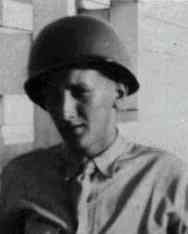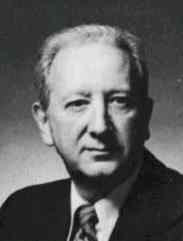
MEMORIES OF HUERTGEN FOREST - WORLD WAR II

|


|
Sometimes I think about the mud and cold of the Huertgen Forest. I remember, at times, having chains
on all four wheels of my jeep and worrying about whether the enemy would hear the clink of them when I was driving from point to point.
I didn't have them on any longer than was necessary. When I did have them on T/4 George Doolittle, our motor mechanic, adjusted them so
they would be as noiseless as possible. I owe a lot to George. He installed a vertical bar on the front of my jeep to protect me from
cables strung across roads. He put extensions on the pedals so he could put sand bags on the front floor, hoping they would protect me
if I happened to run onto a mine. If there was anything he could do to my vehicle to make my job safer, he did it.
I remember the crossroads that were zeroed in by the enemy artillery, the dreadful tree bursts, from
which there was little protection and, the mines, both anti-tank and anti-personnel. When the infantry was in a holding position, between
attacks, the trip between their position and the artillery battery of 105's, was always a nerve wracking experience. We used the jeep to
run communication wire between the positions. We had a reel of wire mounted on the rear of the vehicle for this operation. Sometimes the
enemy would infiltrate and plant mines, in the so called roads we used, that had previously been cleared by the engineers. I remember one
time when myself and the radio operator were bracketed by german artillery when we were returning to our unit. We got caught in the open.
We had been through that area four or five times before that without any problems at all. It was a miracle that we got to cover. That's
just an example of how fast situations could change.
A number of the casualties I saw in Huertgen Forest were the result of anti-personnel mines. One incident
I'll never forget was when a GI stepped on a mine, lost or mangled his foot, and two others, trying to help, also came in contact with mines.
I sure am glad I wasn't a medic. They had a real rough job. I can't imagine what must have gone through their minds at a time like that. It
must have been awful.
One thing that has, and still does haunt me, is wondering how many enemy soldiers and civilians were killed
or crippled for life, due to the artillery fire that my observers directed on enemy positions. I have had mixed feelings about that over the years.
The only consoling thought is that, at the time, it had to be done. It was our job and we did it well. I have no regrets. Just memories.

|